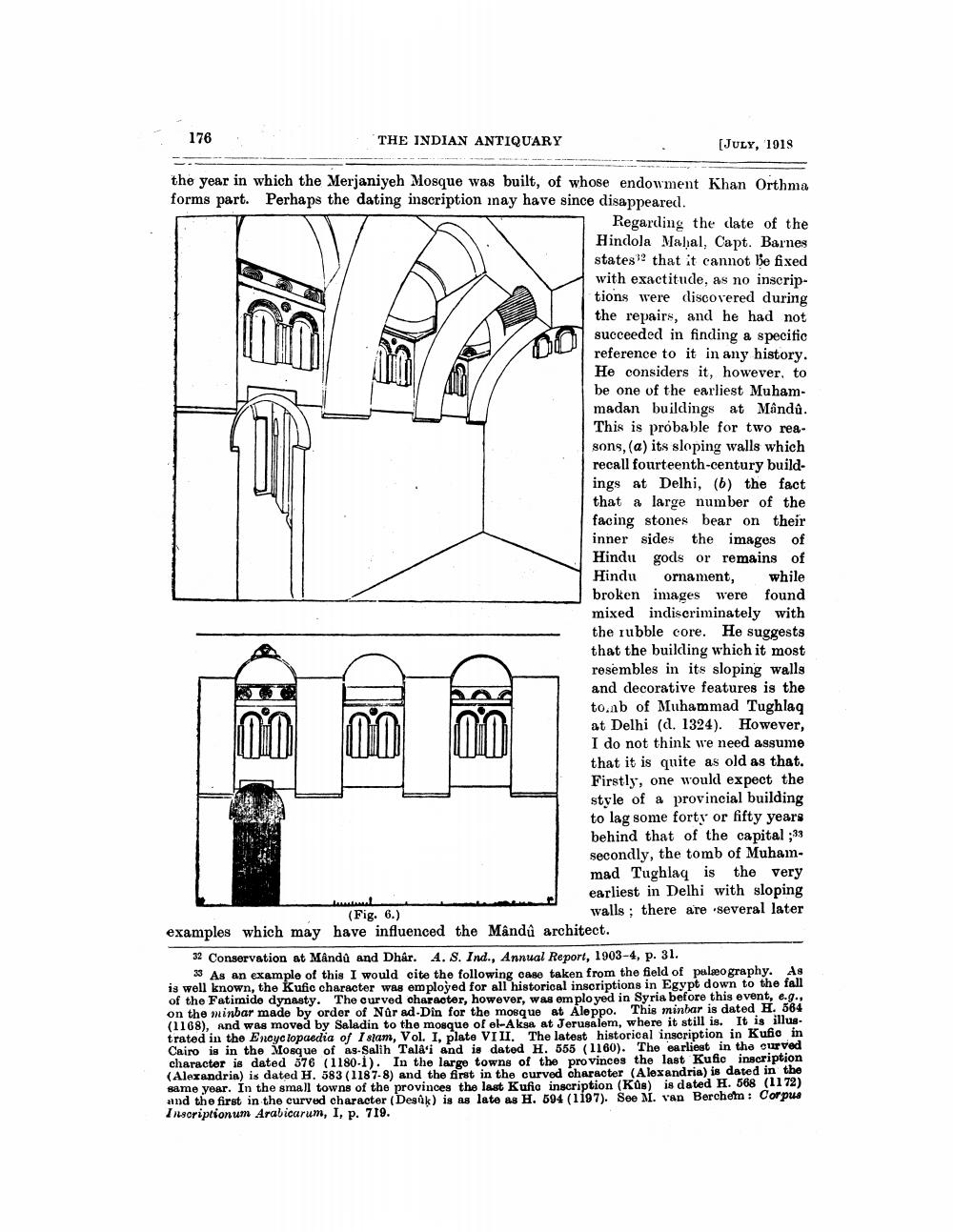________________
176
THE INDIAN ANTIQUARY
[JULY, 1918
the year in which the Merjaniyeh Mosque was built, of whose endowment Khan Orthma forms part. Perhaps the dating inscription inay have since disappeared.
Regarding the date of the Hindola Mahal, Capt. Barnes states that it cannot be fixed with exactitude, as no inscriptions were discovered during the repairs, and he had not succeeded in finding a specific reference to it in any history. He considers it, however, to be one of the earliest Muhammadan buildings at Mândů. This is probable for two reasons, (a) its sloping walls which recall fourteenth-century buildings at Delhi, (b) the fact that a large number of the facing stones bear on their inner sides the images of Hindu gods or remains of Hindu ornament, while broken images were found mixed indiscriminately with the rubble core. He suggests that the building which it most resembles in its sloping walls and decorative features is the to.ab of Muhammad Tughlaq at Delhi (d. 1324). However, I do not think we need assume that it is quite as old as that. Firstly, one would expect the style of a provincial building to lag some forty or fifty years behind that of the capital ;33 secondly, the tomb of Muhammad Tughlaq is the very
earliest in Delhi with sloping (Fig. 6.)
walls; there are several later examples which may have influenced the Mândú architect.
32 Conservation at Mându and Dhår. 4. S. Ind., Annual Report, 1903-4, p. 31.
33 As an example of this I would cite the following case taken from the field of palæography. As is well known, the Kufic character was emploġed for all historical inscriptions in Egypt down to the fall of the Fatimido dynasty. The curved character, however, was employed in Syria before this event, e.g., on the minbar made by order of Nar ad-Din for the mosque at Aleppo. This minbar is dated H. 564 (1168), And was moved by Saladin to the mosque of el-Aksa at Jerusalem, where it still is. It is illus. trated in the Encyclopaedia of Islam, Vol. I, plate VIII. The latest historical inscription in Kufio in Cairo is in the Mosque of is-Salih Tala'i and is datod H. 555 (1160). The earliest in the curved character is dated 576 (1180-1). In the large towns of the provinces the last Kufio inscription (Alexandrin) is dated H. 583 (1187.8) and the first in the curved character (Alexandria) is dated in the
vinces the last Kufio inscription (Kus) is dated H. 568 (1172) and the first in the curved character (Desk) is as late as H. 604 (1197). See M. van Berchem: Corpus Inscriptionum Arabicarum, I, p. 719.




